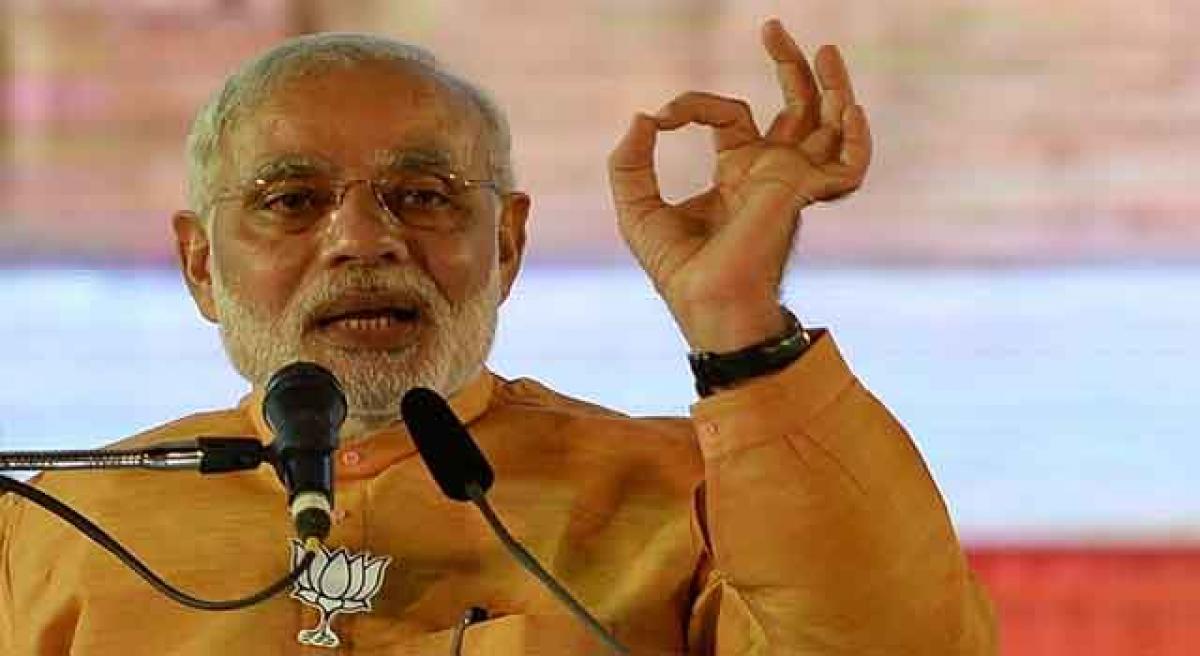Live
- Advanced anti-drone systems deployed for devotees’ safety at Mahakumbh
- Workshop on ‘Industry-Academia Practices in Civil Engineering’ concludes
- Revanth assures Kurma community of its due
- 204 cadets pass out of AFA
- Youngest chess king wins laurels for India
- FairPoint: Rahul’s rhetoric falls flat as PM Modi steals spotlight
- Notice issued to SGPC chief Dhami
- PM Surya Ghar scheme set to surpass a decade’s installation growth in a year
- Centre should probe Soros-Gandhis nexus
- Student held, released after counselling
Just In

“Let us never forget that government is ourselves and not an alien power over us. The ultimate rulers of our democracy are not a President and senators and congressmen and government officials, but the voters of this country,” said Franklin D Roosevelt.
“Let us never forget that government is ourselves and not an alien power over us. The ultimate rulers of our democracy are not a President and senators and congressmen and government officials, but the voters of this country,” said Franklin D Roosevelt.
But, all this is only in theory; voters have no direct say in the constitution of a cabinet once they give the mandate to a party. Political permutations and combinations shape the government formation. Notwithstanding crazy discussions on politics of cabinet formation, the fact remains that in democracies, politics rather than professionalism sings the tune for ministerial musical chairs.
Precisely, this is the backdrop for the Prime Minister Narendra Modi‘s second major cabinet expansion since he assumed office in 2014. The cabinet strength now stands at 64. The present expansion is likely to take the cabinet tally to the maximum of the limit stipulated by law. Prime Minister has a political and legal prerogative to do so.
But, it belies the claim of Modi to a minimal government and maximum governance. But, the BJP alone cannot be accused of the large size of the cabinet even in the reforms era, when government role in the economy is slashed.
Some amount of streamlining is also possible to adjust the work load of few ministers. For instance, Finance Minister Arun Jaitely may be relieved of the portfolio of information and broadcasting. The cabinet expansion or reshuffle is obviously done with an eye on forthcoming Assembly elections, especially Uttar Pradesh where the BJP has very high stakes.
Thus, social arithmetic is expected to influence the art of cabinet expansion. With caste more than the religion card playing a bigger role in the elections in the States like UP, Modi is more likely to induct dalit faces into his cabinet. Certain unrepresented castes and politically influential communities may be roped in to ensure political mobilisation for the ruling party.
Of course, politics in the post television age requires even image management. M J Akbar is likely to get a berth in this quota. There seems to be a perfect work division in the BJP leadership. While the Prime Minister talks about development, certain leaders are always busy rousing controversial issues.
But, these fringe elements that are more or less on the periphery so far, as far as government is concerned, are most likely to be inducted into the cabinet. Yogi Adityanath seems to be a frontrunner on this count. Perhaps, Modi will have to launch a Shut Up India campaign as his own ministerial colleagues intensify divisive campaign.
But, in the election age, perhaps, Modi cannot ignore the ‘immense contribution’ their services to the party.Of course, the performance appraisal may be the last factor to be considered while attempting the cabinet reshuffle.
Reports suggest that Law Minister Sadananda Gowda may face the exit or change of portfolio on this account. No Prime Minister will have an abundant political space to define his cabinet only based on the merit. However, the factors discussed will remain. The faces may change as politics further vet the process.

© 2024 Hyderabad Media House Limited/The Hans India. All rights reserved. Powered by hocalwire.com







